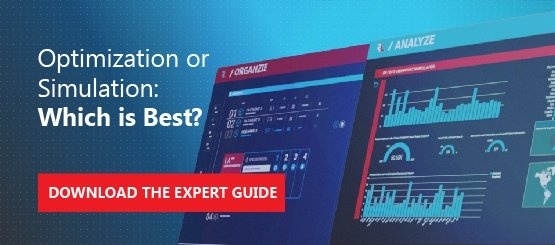For example, we now have software that can be defined by a group of parameters that, with a great level of accuracy, predicts future business trends and allows for successful implementation of Integrated Business Planning. There are a number of different algorithms out there, and their primary use is in calculation and processing of data (though there are also many involved with automated reasoning.)
Effectiveness
Sometimes called a mechanical operation or procedure, algorithms are classified in mathematics as an "effective method." Imagine a system that's observably mechanical, like a weight and pulley system. The weight affects the mechanics of that system in a way that's predictable. Now, should the Earth quake beneath a weight and pulley system, it's going to operate differently. If the weight is forcibly pulled to one side, or the cables involved manipulated in their elastic capacities, naturally the system will work in an altered capacity. The difference between a conventional mechanical operation and an algorithm is that an algorithm can continue to predict outcomes with increasingly complex variables.
As computational technology gets involved, this accuracy only increases. Today, we use algorithms to predict geologic functions for example — that's where the "Richter" scale comes from! Using that information, you could program software with an algorithm that predicts the variations in a pulley system given the magnitude of the quake. In fact, modern architecture uses methods just like these when deciding on a structure's stability.
Algorithms calculate functions, and to the specifications of those who need answers.
Historical Accuracy
Mathematical functions like algorithms can be traced back hundreds of years. As late as the 1920s, algorithms became defined by modern thinking and were formalized into effectively calculable functions which eventually led to the formulation of the "thinking machine", or "computer". Without algorithms we wouldn't have computers. Defining algorithms can't be limited to digital computations — however, without algorithms things like software wouldn't even be possible.
Further Innovation
What is an algorithm without implementation? Theoretical. However, computational technology has moved far past the theoretical, and in an exponential way algorithms have begun to increase in accuracy, effectiveness, and regular usage. With modern methods of storing data, what can be processed and stored has increased in levels of magnitude eminently similar to such exponential growth.
Currently there exists computational technology made possible through cloud computing which can examine levels of data like petabytes and terabytes in real time. This isn't possible without strong, post-theoretical algorithms. And what has been developed with those algorithms is greater, more expansive algorithms which can be used to interpret massive levels of data like that.
Prescriptive Analytics
As the name implies, prescriptive analytical functions are used to predict future outcomes. What is an algorithm, but a method by which prescriptive analytics can be facilitated? Using cloud-computing technology, data on the level of terabytes and petabytes is sifted through, and from this data algorithms can be derived which successfully describe future outcomes based on those variables.
For example, a business might take all the information regarding time of delivery, successful delivery, percentages of damage, and whatever else applies, and use a software consisting of expository algorithms to determine where redundant practices are. The end goal would be to avoid them. Sometimes a supply chain has links which serve no purpose that are extremely costly and wsateful. However, if all variables, including constraints, are plugged into a program designed to provide a holistic business view, a clear picture emerges allowing errors to be erased and effective practices to be expanded upon. This is all thanks to algorithms.
In Practice
There are countless organizations using algorithms in predictive and prescriptive analytical application. Integrated business planning isn't even possible in modernity without proper algorithms. This is especially the case with larger business and enterprises. In five years, every large will be leveraging algorithms to increase its bottom line. Stay tuned for our upcoming blog post on using algorithms in business.







